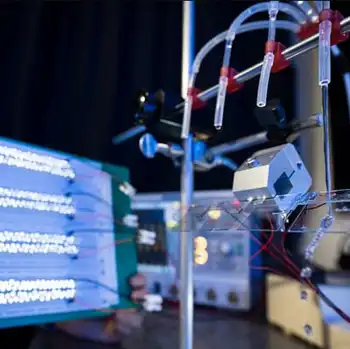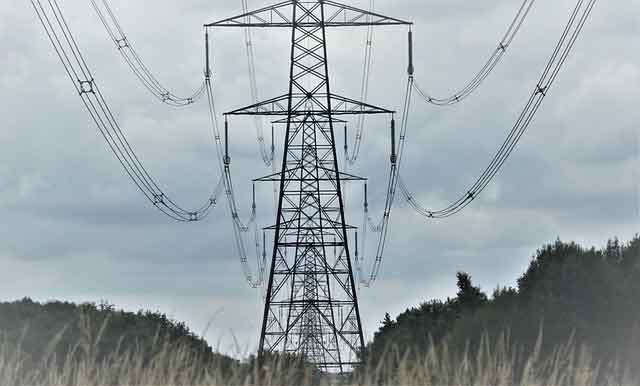Nuclear industry is hiring
By Atlanta Journal Constitution
NFPA 70e Training
Our customized live online or in‑person group training can be delivered to your staff at your location.

- Live Online
- 6 hours Instructor-led
- Group Training Available
“Nuclear energy is undergoing a renaissance worldwide,” said John Richardson, president of Enercon Services Inc., an engineering and environmental consulting firm whose Power Generation Services Division is located in Kennesaw. “We expect to see 20 to 30 percent growth in the industry by 2030.”
Enercon hired 117 people in the first quarter of 2009, “and we’re in the process of hiring another 15 from the Georgia Tech Alumni Career Fair,” said Michelle Zerkle, recruitment manager.
The nuclear industry began to decline after the much publicized accident at Three Mile Island, Pa., in 1979.
“Largely due to safety concerns, no new licenses were granted for nuclear power plants after that,” Richardson said, “but in the last two years companies have made 26 license applications to the Nuclear Regulatory Commission. Our company prepared four of those, completed 10 site-selection studies and provided other strategic consulting.”
Today 103 nuclear power plants are in operation in the United States, and they generate almost 20 percent of the countryÂ’s electricity, according to a 2008 Department of Energy report on the prospects of nuclear electricity generation in China, India and the U.S. Georgia Power plans to build two new reactors at Plant Vogtle near Augusta.
“The whole energy field is changing, and nuclear is a part of the solution,” said Andy Cole, a communications specialist with Progress Energy Carolinas Inc. “For years, the U.S. relied on inexpensive oil and gas. Now we’re concerned with energy security — about 70 percent of our fossil fuels come from overseas — and costs, which have continued to rise and fluctuate.”
The country is looking for alternative sources such as wind, solar, biofuels and nuclear.
“Nuclear energy is green energy in that it gives off no carbon-emissions,” Richardson said. “The uranium fuel comes from Canada and Australia — countries that support the U.S. — and you only have to refuel a nuclear power plant every 18 to 24 months.”
The advantage of nuclear power is that once a plant is up and running, it provides consistent energy to supply electricity 24 hours a day, 365 days a year. Wind and solar canÂ’t provide the same reliability.
“In 30 years, the technology has advanced to make nuclear power safer, cleaner and more efficient,” said Ed Ramirez, recruitment manager with Enercon.
Although the licensing and building of new plants is a slow, arduous and costly process (each plant costs $6 billion-$8 billion), nuclear power is the lowest cost-producer of baseload [consistently needed] electricity. Each plant also generates about 400 to 700 new permanent jobs and approximately $430 million in sales of goods and services in the local community, along with nearly $40 million in total labor income, according to the Nuclear Energy Institute.
Progress Energy is planning two new plants.
“We’ve selected the site, purchased the land and are beefing up staff for a new plant near Crystal River in Florida,” Cole said.
Another new reactor is planned for an existing site in Cary, N.C.
“We’re growing and recruitment of new talent is really competitive,” Cole said.
New talent is needed both for industry growth and to replace an aging work force.
“We have a wall that honors people with 25 years with the company in our Hartsville, S.C., plant. There are about 125 people on it who will be retiring in about 10 years,” Cole said. “Finding workers to operate existing and new plants is an industrywide challenge.”
Engineering schools have cut back on their nuclear engineering programs in the past 20 years, but thatÂ’s changing.
“We’re seeing a surge in colleges re-energizing those programs and bringing curricula up to date to meet recruitment demand,” Ramirez said.
“The jobs in nuclear energy are more diverse than people think,” Cole said.
Besides the necessary engineers and scientists, nuclear plants also need people with electrical, technical and mechanical skills, such as welding, pipe fitters, carpenters and heavy equipment operators. A two-year technical degree in civil engineering or electrical would prepare workers for many jobs. The industry can also use accountants, health physicists, human resource managers, technical writers, computer analysts, safety and protection specialists, and educators.
“With new developments constantly, there is an ongoing need for people who can train,” he said. “The jobs in this industry are demanding but very rewarding — and the future is bright for careers in this field.”











